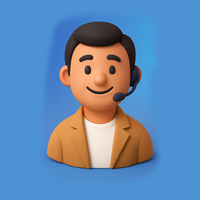
There’s something truly special about children’s books. They don’t just tell stories, they spark imaginations, teach lessons, and create memories that last a lifetime. Maybe you’ve written a tale about a brave little mouse, a curious dinosaur, or a child who discovers the joy of kindness. Whatever your story, you’re holding something precious in your hands. But how do you turn that story into a book that kids can read, love, and share?
Publishing a children’s book can feel like a big adventure—exciting, but a little overwhelming. You might be wondering: Where do I start? How do I make sure my book looks as good as it reads? And how do I get it into the hands of young readers? That’s where this guide comes in. We’ll walk through each step of how to publish a children’s book, from writing and illustrating to choosing the best children’s book publishing services for your needs.
At the end of this journey, you’ll have a published book that not only entertains but also inspires the next generation of readers. So, let’s get started—your story deserves to be told.
Ready to bring your children’s book to life? Reach out to Fleck Publisher today. We’ll help you publish your book on digital platforms and get it into the hands of eager young readers.
Step 1: Writing a Story That Kids Will Love
Every great children’s book begins with a story that captures a child’s heart. But writing for kids isn’t the same as writing for adults. Children have shorter attention spans, so your story needs to be engaging, simple, and full of wonder.
What Makes a Children’s Book Unforgettable?
- Simple, Clear Language – Kids are still learning, so use easy words and short sentences. Avoid complicated phrases that might confuse them.
- Characters Kids Can Relate To – Whether it’s a shy turtle, a brave little girl, or a talking tree, children love characters they can connect with.
- A Fun or Meaningful Message – The best children’s books either teach something important (like sharing or bravery) or simply make kids giggle and dream.
- Rhythm and Repetition – Many beloved children’s books use rhymes or repetition to keep kids engaged. Think of books like The Cat in the Hat—the rhythm makes it fun to read aloud.
Tips for Writing Your Story
- Read It Aloud – If it doesn’t sound fun when you say it, kids won’t enjoy listening to it.
- Keep It Short and Sweet – Picture books are usually 24-32 pages long, with around 500-1,000 words. Chapter books for older kids can be a bit longer.
- Test It with Kids – Share your story with children in your target age group. Their reactions will tell you what’s working and what needs a little more magic.
Once your story is ready, it’s time to bring it to life with illustrations.
Step 2: Illustrations – Bringing Your Story to Life
A children’s book without pictures is like a cake without frosting—it’s missing something essential. Illustrations help kids visualize the story, making it more engaging and memorable.
Why Are Illustrations So Important?
- Kids Learn Visually – Bright, colorful images keep their attention and help them understand the story.
- Illustrations Set the Tone – A funny, cartoonish style works for silly stories, while softer, detailed art fits bedtime tales.
- They Make Your Book Stand Out – A beautifully illustrated book is more likely to catch a parent’s or teacher’s eye.
How to Get the Perfect Illustrations
- Work with a Professional Illustrator – If drawing isn’t your strength, hiring an illustrator ensures your book looks polished and appealing. Many children’s book publishing services offer illustration packages to match your story’s style.
- Match the Art to Your Story – The illustrations should reflect the tone of your book. A silly story needs playful art, while a heartfelt tale might need softer, more detailed drawings.
- Keep Characters Consistent – Kids notice details! Make sure characters look the same throughout the book.
What If You’re on a Budget?
If hiring an illustrator feels out of reach, some authors use digital tools or simple drawings. However, professional illustrations make a big difference in how your book is received. Many children’s book publishing services offer affordable options to help bring your vision to life.
Step 3: Editing – Polishing Your Story to Perfection
Before your book can be published, it needs to be polished until it shines. Even the best stories can have mistakes, and a poorly edited book can turn off readers—and publishers.
Why Editing Matters
- Grammar and Spelling Errors – Kids might not notice, but parents and teachers will.
- Story Flow – Does the plot make sense? Are there any confusing parts?
- Age-Appropriate Language – A book for 5-year-olds should use simpler words than one for 10-year-olds.
How to Edit Your Book
- Edit It Yourself First – Read your story multiple times. Look for awkward phrases, repetitive words, or parts that drag.
- Get Feedback – Share your book with friends, family, or teachers. Ask them what they think.
- Hire a Professional Editor – Many children’s book publishing services include editing to ensure your book is error-free and engaging.
A well-edited book is more likely to be accepted by publishers and loved by readers.
Step 4: Choosing the Right Publishing Path for You
Now that your story is written, illustrated, and edited, it’s time to publish! But how? There are a few different ways to publish a children’s book, each with its own benefits.
Option 1: Traditional Publishing
In traditional publishing, a publishing company pays you to publish your book. They handle editing, illustrations, printing, and marketing—but getting accepted can be tough.
Pros:
- No upfront costs.
- Prestige and wider distribution.
- Professional marketing support.
Cons:
- Very competitive (only a small percentage of manuscripts get accepted).
- You give up some control over your book.
- The process can take 1-2 years.
If you choose this path, you’ll need to:
- Find a Literary Agent – Most big publishers only accept submissions from agents.
- Submit to Publishers – Research publishers that specialize in children’s books.
- Wait for Responses – It can take months to hear back.
Option 2: Self-Publishing
Self-publishing means you handle everything—writing, illustrating, editing, and marketing—but you keep full control and higher royalties.
Pros:
- Full creative control.
- Faster publishing (your book can be out in weeks or months).
- Higher royalties per sale.
Cons:
- You pay for editing, illustrations, and marketing.
- You’re responsible for promoting your book.
If you choose self-publishing, children’s book publishing services like Fleck Publisher can help with:
- Professional editing and illustrations.
- Printing and ebook formatting.
- Distribution to Amazon, Barnes & Noble, and other major retailers.
Option 3: Hybrid Publishing
Hybrid publishing is a mix of traditional and self-publishing. You pay for some services (like editing or illustrations), but the publisher helps with distribution and marketing.
Pros:
- More support than self-publishing.
- Faster than traditional publishing.
Cons:
- Can be expensive.
- Not all hybrid publishers are reputable—do your research!
Step 5: Formatting and Printing Your Book
Once you’ve chosen your publishing path, it’s time to prepare your book for print or digital release.
Formatting Your Book
- Picture Books – Typically 8.5 x 8.5 inches or 10 x 8 inches for a classic look.
- Chapter Books – Usually 5 x 8 inches or 6 x 9 inches, similar to novels.
- Ebooks – Need to be formatted for Kindle, Apple Books, and other digital platforms.
Many children’s book publishing services offer formatting to ensure your book looks professional.
Printing Your Book
If you’re printing physical copies, you’ll need to decide:
- Print-on-Demand (POD) – Books are printed as they’re ordered (no upfront costs).
- Bulk Printing – Cheaper per book but requires storing inventory.
For ebooks, you’ll need to convert your book into digital formats like EPUB or PDF.
Step 6: Marketing – Getting Your Book into the Hands of Readers
Publishing your book is just the beginning. To sell copies, you need to get the word out. Even the best books need marketing to reach readers.
How to Market Your Children’s Book
- Create an Author Website – A simple site with your book info, bio, and contact details.
- Use Social Media – Share updates, illustrations, and fun facts about your book on Instagram, Facebook, and TikTok.
- Reach Out to Bloggers and Reviewers – Many book bloggers and YouTubers review children’s books.
- Visit Schools and Libraries – Reading your book to kids is a great way to build excitement.
- Host a Launch Event – Celebrate your book with a signing or virtual party.
Many children’s book publishing services offer marketing support to help you promote your book effectively.
Final Thoughts:
Publishing a children’s book is a journey filled with creativity, hard work, and excitement. From writing a story kids will love to how to publish a children’s book and choosing the right children’s book publishing services, each step brings you closer to seeing your book on shelves and in the hands of young readers.
Remember, every great children’s book started as an idea—just like yours. With the right guidance and support, you can turn that idea into a published book that inspires, entertains, and delights kids for years to come.

